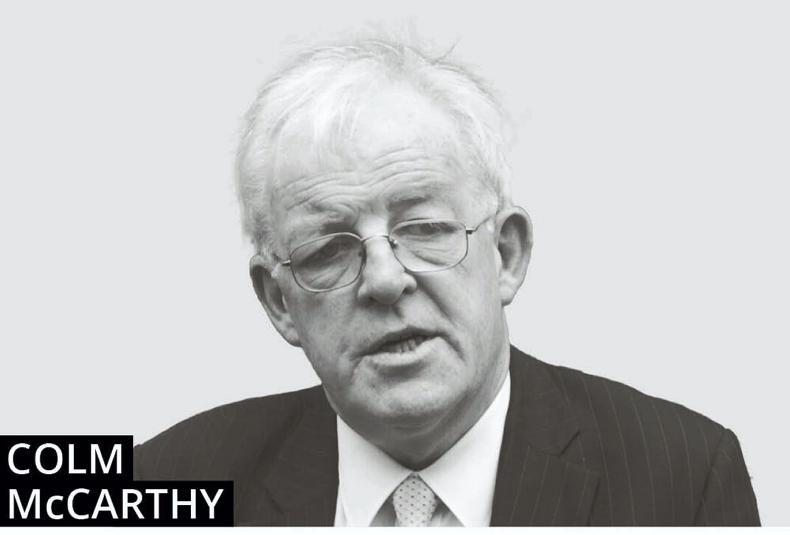Energy security is not an issue until, some fine day, it becomes the only issue. The power switches off, industry and business grind to a halt, the lights go out. This almost happened in recent months and Ireland needs to reconfigure its energy supply system.
Spare capacity is shrinking in the electricity industry at a time when demand is expected to grow and conventional power stations with high emissions will have to close. Ireland is not the only country with decisions to take.
Coal is big in the Big Sky country. Montana contains the greatest coal reserves of any US state and some of the country’s largest surface mines in the Powder River Basin.
Coal-fired power stations have struggled across the US in recent years
There is limited local demand from a population of just over 1m and most of the coal gets exported.
Coal-fired power stations have struggled across the US in recent years in competition with cheaper natural gas and the nearby customer states of Oregon and Washington have passed anti-coal legislation.
Double whammy
Two of Montana’s large coal-fired units at Colstrip, right next door to a large surface mine, closed last year and the two remaining, with a combined capacity greater than Moneypoint, are expected to follow soon, which is a double whammy for the local politicians since the mine can hardly survive if the power plant closes.
Getting stuck with stranded assets unexpectedly is a pain but constructing them when your eyes should have been open is something else
There is a clear analogy with the turf stations in the Irish midlands, so thoughtlessly constructed less than 20 years ago.
Getting stuck with stranded assets unexpectedly is a pain but constructing them when your eyes should have been open is something else. Moneypoint is different for two reasons. There are no coalmines nearby, or anywhere in Ireland and the station was commissioned in 1985, so has limited useful life left. It can be closed with less economic cost or political grief.
Montana votes Republican and the Republican party has traditionally been friendly to the fossil fuel industry. The state is in the process of choosing a different direction. The governor, Greg Gianforte, has promoted legislative changes which would permit the construction of nuclear stations in Montana and there is now a commitment to consider building a plant at the Colstrip site.
The neighbouring, and Republican, state of Wyoming, the US’s largest coal producer, has just been handed the same option, courtesy of Bill Gates and Warren Buffett.
Gates’ company TerraPower and Buffet’s PacifiCorp are to partner in a 345MW nuclear unit at a retired Wyoming coal plant.
There is an emerging power shortage in parts of China as local governments there slow down the pace of expansion in coal-fired capacity
The plant will cost about €800m, double the cost of modern gas units of the same size but with lower operating costs and much lower carbon emissions. At its launch, Gate described it as a “game-changer”.
“This is our fastest and clearest route to becoming carbon negative,” said Governor Mark Gordon.
In recent decades, the failure to control emissions worldwide has coincided with a boom in coal-fired generation capacity, notably in China. There is an emerging power shortage in parts of China as local governments there slow down the pace of expansion in coal-fired capacity.
In Europe and North America, coal units are being retired. Since it is not technically feasible to maintain steady power supply without dispatchable, always-on, generation, there can never be a total retreat from large conventional stations.
System-scale batteries
The only ways to square the circle are system-scale batteries (prohibitively expensive), or conventional stations with the lowest possible emissions. Hence the renewed interest in nuclear. Power engineers think that gas stations will also be needed as cover, possibly only occasionally.
Traditional nuclear technologies delivered plants around 1,000MW, large for the Irish system where peak demand reaches only about 6,000 and the trough is half that level
If a 100% reliance on wind and solar is not feasible, and if large-scale batteries cost too much, there could be a practical nuclear option for Ireland down the road. Interconnection to France is probably going to happen, so the Irish consumer will be using nuclear electricity one way or the other. Why not build some nuclear units here?
There have always been two practical objections. Traditional nuclear technologies delivered plants around 1,000MW, large for the Irish system where peak demand reaches only about 6,000 and the trough is half that level. A single unit so large is hard to accommodate.
Capital costs have also been excessive, with repeated cost overruns. But the new technology promises lower capital cost and smaller units. Nuclear should be on the Irish agenda.






 This is a subscriber-only article
This is a subscriber-only article










SHARING OPTIONS: